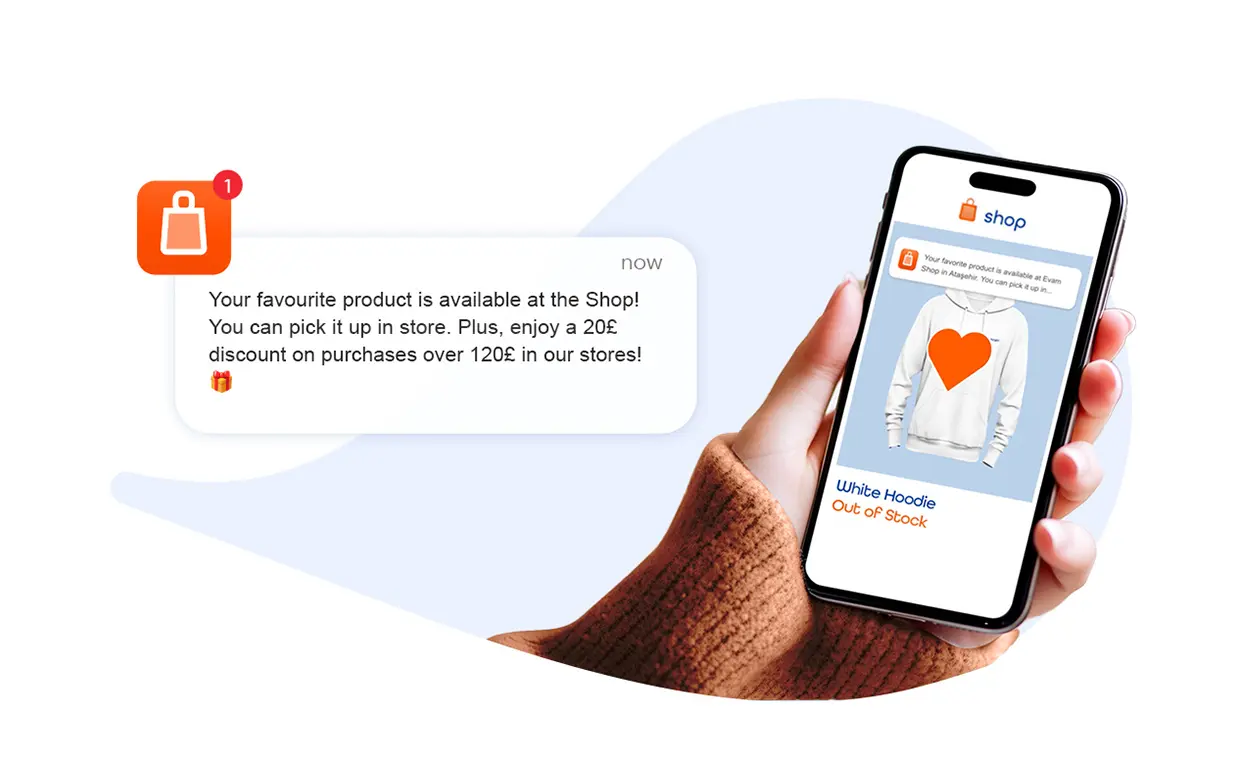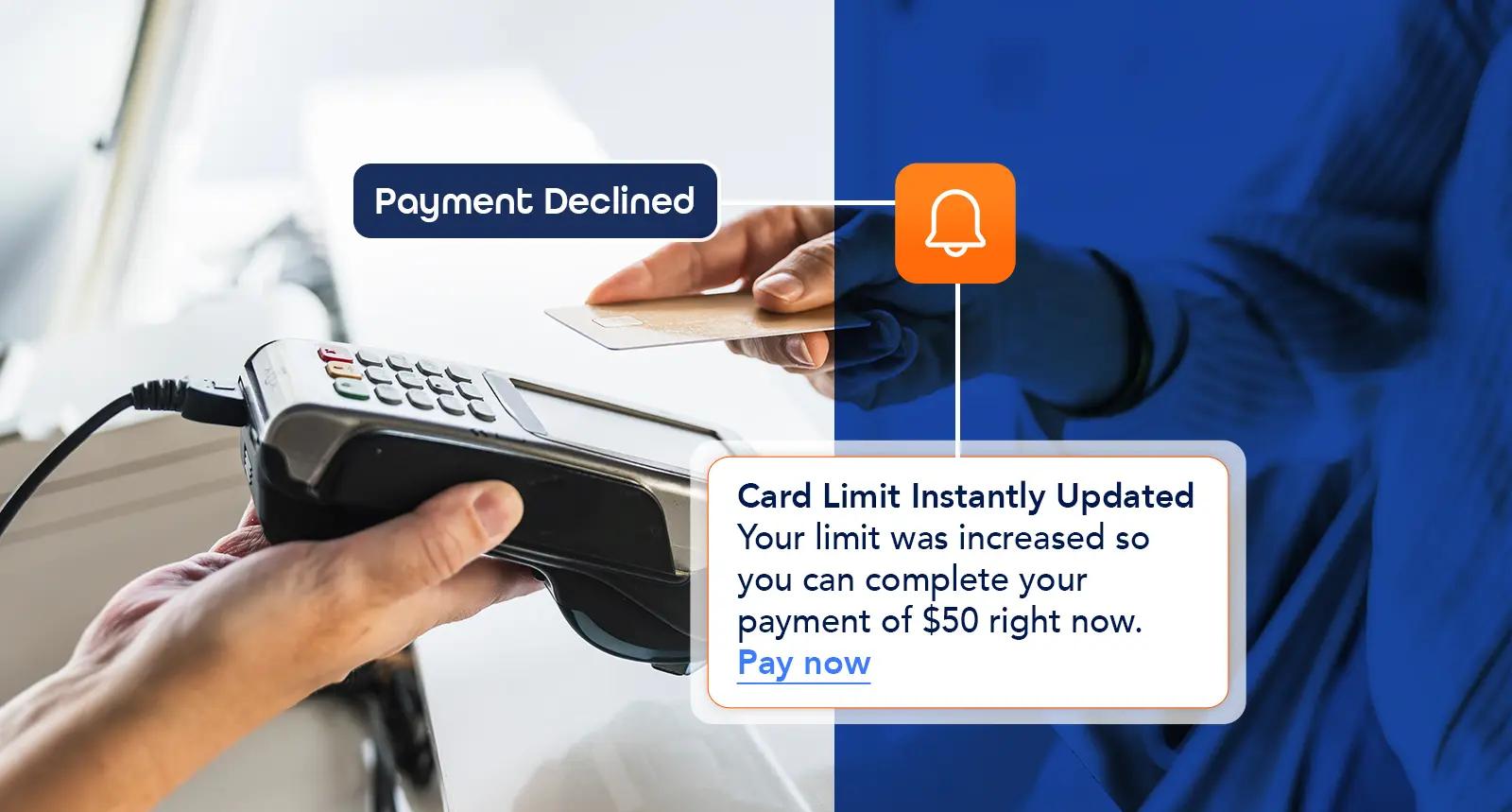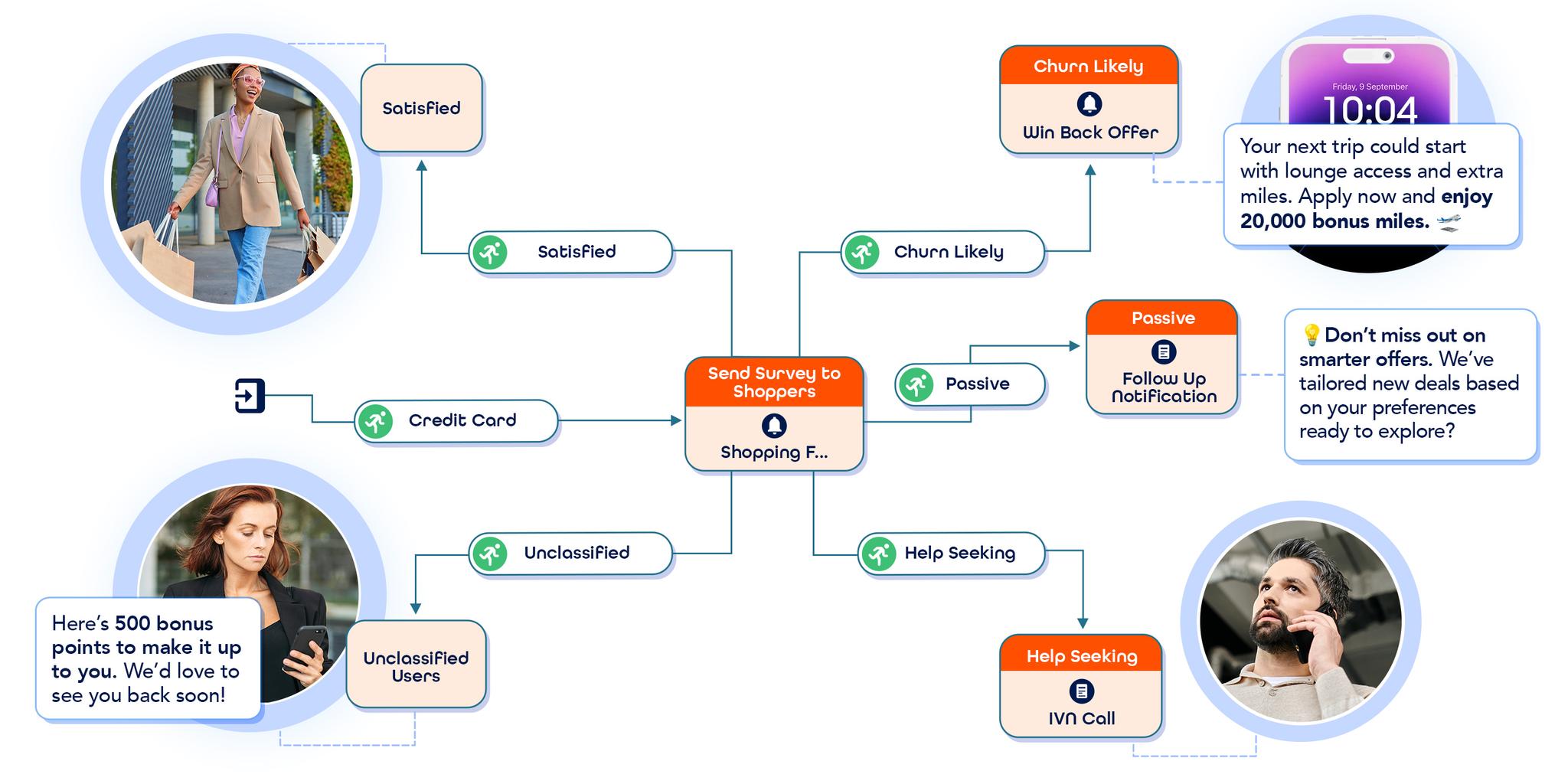Table of Contents
- What is Cross Channel Marketing?
- The Transition from Multichannel to Cross-Channel Marketing
- Why Embrace Cross-Channel Marketing?
- Key Benefits of Cross Channel Marketing
- Optimizing Your Cross-Channel Marketing Infrastructure
- Step 1: Assess Your Technology Stack
- Step 2: Facilitate Team Collaboration
- Step 3: Rethink Customer Data Usage
- Step 4: Adopt a Phased Approach
- Crafting Your Cross-Channel Marketing Strategy
- Step 1: Know Your Audience
- Step 2: Select the Right Channels
- Step 3: Create a Cohesive Message
- Step 4: Leverage Technology
- Executing Cross-Channel Marketing Campaigns
- Start with a Clear Objective
- Use Data to Personalize
- Test and Optimize
- The Power of a Cross-Channel Marketing Platform
- Your Partner in Cross-Channel Marketing: Evam
- Why Choose Evam?
- Transform Your Marketing Today
Between countless channels and fast customer traffic, it’s no longer enough to only make your brand’s voice heard. One in three consumers say they will walk away from a brand they love after just one bad experience. Thus, the main goal is to create a smooth and personalized customer experience where your brand voice resonates clearly on all channels. For this, you have to know cross-channel marketing like the back of your hand and learn to use it most accurately.
In this comprehensive blog post, we’ll navigate the intricacies of crafting a successful cross-channel marketing strategy and explore how leveraging cross-channel marketing software and platforms can transform the way you connect with your audience.
What is Cross Channel Marketing?
At its core, cross-channel marketing is about integrating various marketing channels – such as email, social media, and push notifications – to create a unified, seamless customer journey.
Cross-channel marketing interlinks these channels, ensuring that each touchpoint on the customer journey is both a standalone experience and a part of a cohesive narrative at the same time. It’s a step beyond multichannel marketing, creating interconnected experiences rather than operating channels in isolation.
The Transition from Multichannel to Cross-Channel Marketing
Multichannel marketing utilizes various channels to reach and engage customers. However, its major limitation lies in the independence of these channels, leading to a disjointed and inconsistent user experience.
In today’s day and age, multichannel marketing falls short primarily because consumer shopping habits have evolved dramatically. Modern shoppers might interact with a brand in numerous ways – seeing an advertisement on Meta, following the brand on Instagram, checking out the online store, reading reviews, signing up for newsletters, and more, often engaging in seven or more interactions before deciding to make a purchase.
Customers are no longer just browsing among several stores gathered in a shopping mall and deciding between brands. Brands on the other hand are pushing boundaries to capture the attention of their target audience. 51% of companies use at least eight channels to interact with their customers, and consistent messaging across all channels can increase purchase intent by 90%.
At that point, without a unified approach to all touchpoints, delivering a cohesive experience becomes challenging. This highlights the crucial need for brands to adopt a cross-channel marketing strategy, ensuring all touchpoints are interconnected and effective.
What a cross-channel campaign promises is much more than brand awareness. It’s about creating an immersive customer experience that drives customer loyalty and deepens engagement in a personalized manner.
Key Benefits of Cross Channel Marketing
Comprehensive Customer Insights: It lets you understand customer behaviors across different platforms, offering valuable insights into their preferences.
Enhanced Customer Experience: Personalized interactions across various channels result in a more satisfying customer experience.
Increased Efficiency: By integrating your marketing efforts across multiple platforms, you achieve a more effective outreach with fewer resources.Higher ROI: Successful cross-channel marketing often leads to better conversion rates and a stronger marketing funnel.
OPTIMIZING YOUR CROSS-CHANNEL MARKETING INFRASTRUCTURE
In this section, we’ll focus on optimizing the infrastructure that underpins a successful cross-channel marketing endeavor. This involves a critical examination of the tools and technologies in play, and the way internal teams interact and collaborate. This foundational aspect is essential for ensuring that your cross-channel marketing efforts are not only efficient but also effective in reaching and engaging your audience.
Step 1: Assess Your Technology Stack
The initial step involves marketing teams comprehensively evaluating the technologies they employ for each channel. It’s crucial to understand the tools at your disposal and their impact on your marketing efforts. Are these tools integrated, or do they operate in silos? The goal is to have a technology stack that works harmoniously across all channels.
Step 2: Facilitate Team Collaboration
Often, internal teams like email, mobile, and direct mail work in isolation, lacking inter-departmental communication. Encouraging dialogue and collaboration among these teams is vital for a cohesive cross-channel strategy.
Step 3: Rethink Customer Data Usage
Understanding customer preferences is key. For instance, if a customer responds better to direct mail than email, but continually receives emails, there’s a clear disconnect. This issue often arises from siloed technology, where customer preferences aren’t effectively tracked or utilized. Cross-channel marketers must identify who their customers are and also understand their preferred channels and where they are in their journey.
Step 4: Adopt a Phased Approach
Embarking on cross-channel marketing should be a gradual process. Start by focusing on improving a few selected channels. For example, if you aim to enhance email campaigns, begin by tailoring them according to the customer’s journey stage. Once you’ve mastered this, you can expand your strategy to include additional channels that align with your consumer base’s preferences.
Incorporating these steps into your cross-channel marketing campaign ensures a more targeted, effective, and cohesive approach. Remember, the key is to evolve and adapt, integrating new channels and strategies as your understanding of your customer base deepens. This methodical approach will surely enhance customer engagement and optimize the potential for higher conversion rates.
CRAFTING YOUR CROSS-CHANNEL MARKETING STRATEGY
Developing a robust cross-channel marketing strategy involves understanding your audience, choosing the right mix of channels, and creating a unified message that resonates across each platform.
Step 1: Know Your Audience
73% of shoppers expect brands to understand their unique needs and expectations. Your target audience is the cornerstone of your strategy. Dive deep into their preferences, behaviors, and pain points. This understanding will guide the tone, content, and channels of your marketing efforts.
Step 2: Select the Right Channels
Not all channels will suit your brand or audience. Choose channels where your audience is most active and engaged, whether it’s email, social media, or others.
Step 3: Create a Cohesive Message
Your message should be consistent yet tailored to each channel. For example, the tone in an email marketing campaign might differ from a social media post, but the underlying message should remain unified.
Step 4: Leverage Technology
Using a cross-channel marketing platform can significantly streamline your efforts. These platforms offer tools to automate and analyze your campaigns in real-time.

Executing Cross-Channel Marketing Campaigns
Crafting a strategy is just the starting point, execution is where your strategy truly comes to life. Here's how to ensure your execution is as potent as your planning:
1. Start with a Clear Objective
Before diving into the nuts and bolts, ask yourself: What’s the end game? Whether it’s lead generation, ramping up sales, or elevating brand awareness, your objective should be the guiding star of your campaign. When you ensure clarity of intention, you guarantee that every marketing move you make is aligned and purposeful.
2. Use Data to Personalize
In today’s data-driven world, personalization is a necessity. Use the rich data at your disposal to tailor your messages to the specific needs, preferences, and behaviors of your target audience. Remember, a message that resonates is a message that converts.
3. Test and Optimize
The beauty of digital marketing lies in its measurability and adaptability. Continuously test different elements of your campaigns – from email subject lines to social media ad formats. Analyze the performance, learn what resonates with your audience, and refine your approach for optimized results. This cycle of testing and optimization is crucial for staying relevant and impactful.
The Power of a Cross-Channel Marketing Platform
While executing a cross-channel strategy can be intricate, working with a robust cross-channel marketing platform simplifies this complexity. Such a platform empowers you to synchronize your campaigns across different channels seamlessly, provides real-time marketing analytics for informed decision-making, and offers tools for effective personalization and optimization. Essentially, it makes certain that your execution is as intelligent and impactful as your strategy.
Your Partner in Cross-Channel Marketing: Evam
In the quest for successful cross-channel marketing, having the right ally makes all the difference. Evam stands at the forefront of this journey, offering an end-to-end real-time marketing platform designed to revolutionize how businesses reach customers.
Why Choose Evam?
Streamlined Campaign Management: Evam simplifies the complexity of running omnichannel marketing campaigns. With our platform, managing all channels becomes a breeze.
Real-Time Data Analysis: Stay ahead with real-time insights. Evam’s real-time marketing hub analyzes customer interactions as they happen, allowing you to adapt swiftly to changing preferences.
Personalization at Scale: Personalize your marketing actions at an individual level. Evam’s technology helps create unique experiences for each customer, enhancing customer loyalty and engagement.
Seamless Integration: Our martech platform seamlessly integrates with your existing systems, ensuring that your marketing efforts are unified and efficient.
Transform Your Marketing Today
Embarking on a cross-channel marketing strategy with Evam means more than just spreading your message across various platforms. It’s about creating a harmonized marketing symphony that resonates with your audience at every touchpoint. Whether you’re focused on email marketing, social media, or any other channel, you can ensure that your voice is heard and also felt.
In a world where 73% of consumers point to customer experience as an important factor in their purchasing decisions, omnichannel marketing and brand awareness are vital, and Evam is your partner in creating memorable and impactful customer journeys and customer engagements. Transform your approach to marketing, engage with your audience in real-time, and experience the unmatched benefits of a sophisticated end-to-end cross-channel marketing platform empowered by Artificial Intelligence (AI), Machine Learning (ML), and cutting-edge martech tools.
Ready to rev up your marketing game?
Let’s redefine the future of your customer engagement together.
Frequently Asked Questions (FAQ)
1. What is cross-channel marketing, and how does it differ from multichannel marketing?
Cross-channel marketing is an approach that integrates various communication channels—like email, social media, SMS, and push notifications—into a single, cohesive customer journey. Unlike multichannel marketing, where each channel works independently, cross-channel marketing connects all interactions so that each touchpoint feels like a continuation of the last. This ensures consistency and personalization at every stage, enabling a smoother, more satisfying experience for the customer.
2. Why is transitioning from multichannel to cross-channel marketing essential in today’s environment?
Because modern customers interact with brands across many different platforms before making a purchase, businesses can no longer afford to offer fragmented experiences. Multichannel efforts often lack coordination, leading to inconsistent messaging. Cross-channel marketing solves this by aligning messages and actions across all platforms, so that a customer's journey is unified and uninterrupted. This alignment is crucial for increasing engagement, trust, and ultimately conversions.
3. What are the core benefits of cross-channel marketing for businesses?
Cross-channel marketing gives businesses a clearer understanding of customer behavior by unifying data from various platforms. This leads to more personalized interactions and a better customer experience. The approach also improves operational efficiency by reducing duplicated efforts and allows for better ROI through more targeted and data-informed campaigns.
4. What foundational steps are required to build a cross-channel marketing infrastructure?
The process starts with assessing your current tech stack and ensuring all systems are connected. It’s equally important to break down silos between teams—like email, mobile, and direct mail—so everyone collaborates around shared customer goals. Businesses must also rethink how they collect and use customer data, paying close attention to preferences and behaviors. Finally, it's best to begin with a few high-impact channels and gradually expand your strategy as you optimize and grow.
5. How can businesses identify and select the right channels for their cross-channel strategy?
Choosing the right channels depends on understanding where your audience spends their time and how they prefer to engage with content. Analyzing data on customer behavior, preferences, and past interactions will help you prioritize the platforms that matter most. Focus on the channels that allow you to deliver the right message at the right moment, and tailor your communication style accordingly.
6. What makes messaging effective in a cross-channel campaign?
Effective messaging in a cross-channel campaign is consistent in theme but adapted in tone and format for each platform. The central value proposition should remain clear and unified, even though the expression of that message might differ from an email to a social post. The goal is to reinforce the same brand story across every touchpoint while respecting the context of each channel.
7. How does real-time data improve cross-channel execution?
Real-time data allows businesses to respond instantly to customer actions. For example, if someone abandons a cart or clicks on a specific ad, your system can immediately trigger a follow-up message via another channel—like SMS or push notification—tailored to that behavior. This immediacy increases relevance and makes marketing feel personalized rather than generic, which strengthens engagement.
8. What role does personalization play in cross-channel marketing?
Personalization is essential to making each interaction feel meaningful. Customers expect content that reflects their interests, purchase history, and stage in the journey. Cross-channel strategies allow businesses to tailor every message and offer in real time based on real behavior, leading to higher engagement, better retention, and stronger brand loyalty.
9. How should businesses approach testing and optimization in cross-channel marketing?
Testing and optimization should be ongoing. Businesses should regularly experiment with message formats, timing, channel mix, and targeting strategies. By analyzing which variations perform best and applying those insights across campaigns, marketers can continuously refine their approach. This agile process ensures that efforts remain relevant and effective in a constantly shifting landscape.
10. How does a cross-channel marketing platform like Evam support campaign success?
Evam provides a centralized platform that brings all your marketing channels together. It offers real-time analytics, AI-powered personalization, and seamless integration with your existing systems. This allows marketers to deliver consistent, personalized experiences at scale and react instantly to customer actions. With Evam, businesses can streamline campaign management and create journeys that feel natural, timely, and genuinely connected.








